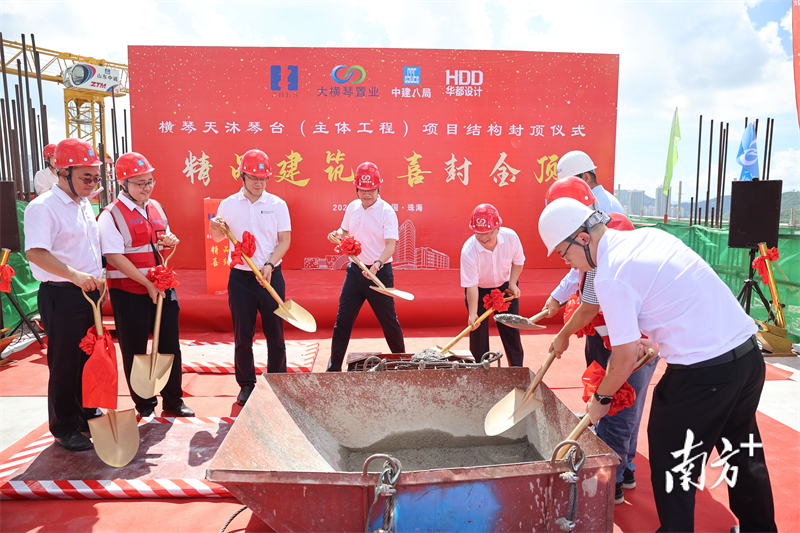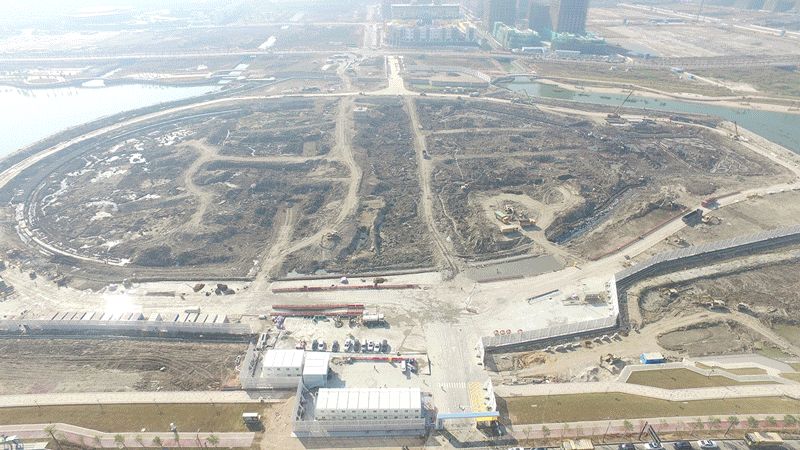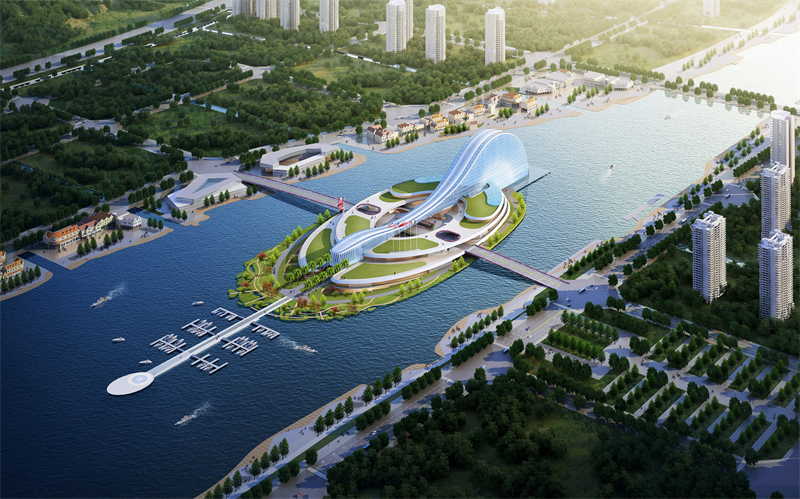2023/07/25 Author: HDD
On the morning of July 25th, a topping-out ceremony was held for the regional landmark "Tianmu Qintai Innovation Center" in Hengqin – a joint design project of Shanghai HuaDu Architecture & Urban Design Co., Ltd. (HDD) and French firm Coldefy & Associates Architects Urban Planners (CAAU). With a total investment of 4.88 billion yuan, the building is expected to be completed by the end of 2024.

Topping-Out Ceremony ©NANFANG DAILY
Known as the "Heart of Hengqin," Tianmu Qintai Innovation Center is located at the center of Tianmu River on Hengqin Island, in between Dahengqin Mountain to its south and Xiaohengqin Mountain to its north. Due to its unique advantageous site location, the project is positioned as a new highland of open economic cooperation. In recent years, a series of policies have been made to support the development of the Guangdong–Hong Kong–Macao Greater Bay Area. Among them, the General Plan for Building Guangdong-Macao In-depth Cooperation Zone in Hengqin has been particularly significant in making Hengqin a pilot zone to promote in-depth reform and opening-up of the Greater Bay Area.

Construction Process
As an important urban project in the Guangdong-Macao In-Depth Cooperation Zone, the center integrates high-end commerce and industry, offering space for office, convention, exhibition, hotel, and commerce. Leveraging the advantages of cooperative development between Hengqin, Hong Kong and Macao, it aims to shape a leading area for open economic practices in China, making the region a world-class bay area.
PROJECT INTRODUCTION
The Tianmu Qintai project is located on the artificial island of Tianmu River on Hengqin Island in Zhuhai. It enjoys a superior natural environment and geographical location being adjacent to the University of Macau in the east and close to the Hengqin Port. The project is a building including business headquarters, convention centers, boutique hotels and experiential commerce. The total construction area is about 240,000㎡; the total investment is 4.88 billion yuan. The building height is 69.9m with 16 floors on the ground and 2 floors underground.

Aerial View
The design concept "The·Melody" (la plus belle mélodie) gains the inspiration from the place name, and adopts the elements of pipa and guqin (both are Chinese traditional musical instrument). It abstracts the basic curvature of guqin, forming the basic shape of the building. Combined with unique environmental features of surrounding islands, the building and the reflection in the water match together.

Building Waterscape
Considering the architecture’s streamlined massing, the design of the main facade uses glass curtain wall though which its interior could be partly seen through, creating an interactive interface between the interior and the exterior. The glass curtain wall is designed in the language of vertical repetitions to strengthen the rhythm of the building, signifying the melody of Guqin.

Elevation

Close Shot
Introducing urban green space and pedestrian walkways into the building on the ground level, the circulation of the building connects different floor levels with various types of spaces: Four floors, from basement two to the second floor, share a dynamic courtyard where people are encouraged to stroll and move between floors through elevated corridors and escalators. The split-level floor plan allows sunlight to penetrate the building and creates an inviting atmosphere. Sunken gardens are designed on the first floor to offer public space, landscape, photo spots and artistic event space to the city. The open platform on the second floor connects entrances to various programs, as well as public rooftop gardens on the third and fourth floors, blurring the boundary between the building interior and exterior landscape.

Solid Space
The whole architectural volume of the project shows the integrated design and the spatial communication of buildings, bridges and islands. The podium and the building are smoothly linked. Through three major design strategies (integration of functional spaces, integration of ecological technologies, integration of the construction site), the project aims to create a landmark architecture that is difficult to replicate.